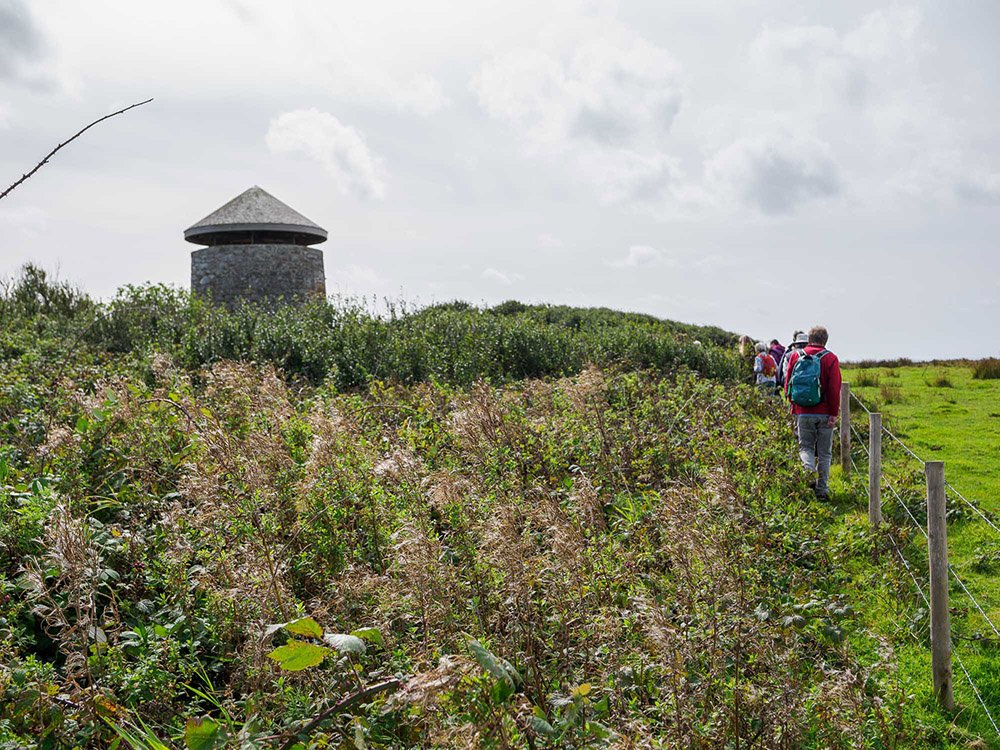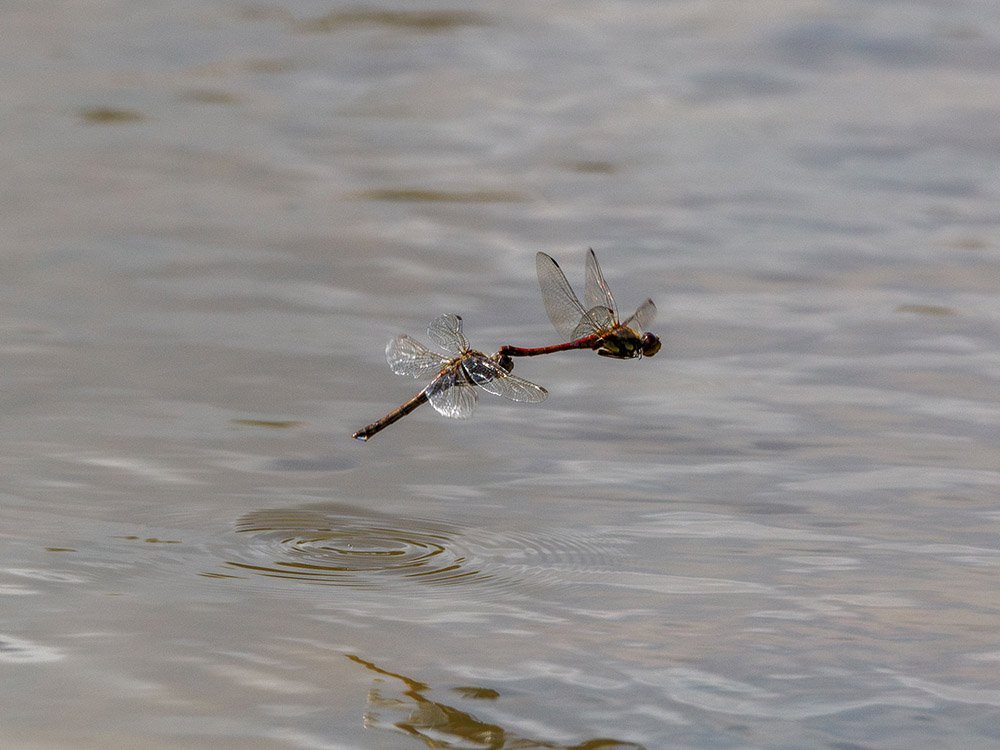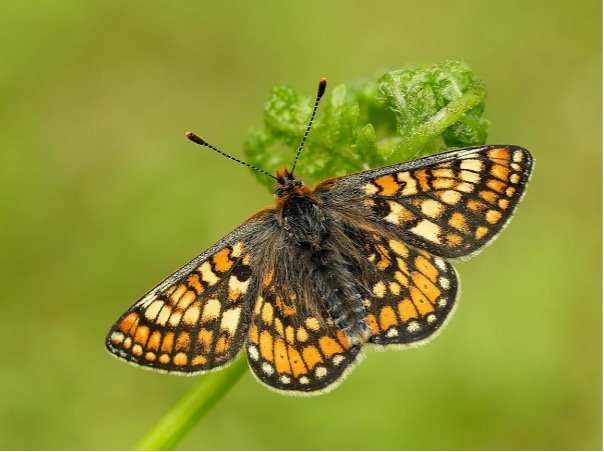A walk around Windmill Farm
As one of Wildlife Groundswell’s autumn conference fringe events in September, 16 of us were treated to a fascinating nature ramble through the Windmill Farm Nature Reserve on the Lizard guided by Dougy Wright, the volunteer warden who knows the land intimately. From finding adders to witnessing the first UK-born Vagrant Emperor dragonfly teneral freshly emerged, Maggie Freegard shares some highlights.
Image: Nick Pearce-Gowildcam
Dougy has been involved from the start of the transformation process of farmland to nature reserve, overseen by the Cornwall Wildlife Trust and Cornwall Birds (CBWPS) for the past 22 years. The 122 hectare site links with other land managed by the National Trust creating a vital refuge for wildlife recovery on the Lizard peninsula.
Despite being late in the year, we saw adders and slow worms warming themselves in the sun below corrugated sheeting. We learnt how adders are no threat to other cold blooded animals, so that slow worms, newts, frogs and toads safely co-exist with them.
Image: Nick Pearce-Gowildcam
Deep, shallow, drying and flying…
Wetlands and ponds offer food and habitat for a good diversity of species. We were shown a variety of ponds, deliberately managed as different types to attract different species. Frogs like to lay their spawn in ephemeral ponds – whose water level varies so much that they are usually dry in the summer. Dragonfly larvae in the deeper ponds would predate frog tadpoles, and the frogs seem to know this! Windmill Farm is usually the first place in the UK to record frogspawn in the autumn. Toads, however need deeper water to spawn.
Image: Nick Pearce-Gowildcam
The stream is host to the Beautiful Demoiselle Damselfly and the Golden Ringed Dragonfly. The Keeled Skimmer dragonfly needs trickling water, the Southern Migrant Hawker likes grass no more than two feet tall, the Southern Hawker prefers ponds with trees whereas the Red-veined Darter likes to lay its eggs in mud at the sides of ponds. Muddy soft sloping banks provide food for Sandpipers and Dunlin.
21 species of dragonfly have been known to breed at Windmill Farm, including the rare Southern Migrant Hawker, and during our visit Dougie identified a 22nd species - the Vagrant Emperor. We saw it as a teneral – freshly emerged, so not with its full adult colouring. This was so exciting, because this dragonfly has previously been considered a migrant in Britain and has not yet established itself as a breeding species. But there it was, the first teneral to be seen in the UK. The following day Dougie and his friend found the excuvia – a dragonfly larva exoskeleton. This is an example of how the world of insects is always changing, a subject taken up at the ‘Let’s Get Wild! – Air and Fire’ conference by our visiting entomologist, Matthew Oates.
Image: Nick Pearce-Gowildcam
Back from the brink
Windmill Farm is grazed by 80 head of cattle, whose farmer makes daily visits. These visits mean they are familiar with human contact and docile for staff and visitors of the reserve. The cattle are not free ranging, but their grazing is an important part of the management of the land for the biodiversity there. Their tread creates clearings for new seed to take hold and they carry seed from one space to another. (This is not always helpful – it means invasive species also spread.) Meadows and heathland provide homes and food for many invertebrates and birds.
Image: Iain Leach
The Marsh Fritillary Butterfly breeds on tracks through the heath where Devil’s Bit Scabious has taken a hold. This butterfly is threatened not only in the UK but across Europe, so is the subject of much conservation effort. Best management of the heath is being worked out, whether to swale (controlled burning) or to cut, but both methods include periodic grazing. Reed beds are being allowed to increase in size as these too support specific species, particularly the reed, sedge and grasshopper warblers.
Image: Nick Pearce-Gowildcam
We were a bit late in the year to witness the maximum abundance of wildlife at Windmill Farm, but still we saw several butterflies, moths and dragonflies. We learnt about spiders, including wasp spiders, and grasshoppers and crickets. It was reassuring to know that at least some species, in some special places like Windmill Farm Nature Reserve, are coming back from the brink.
+
Sign up to our newsletter (on our homepage) to hear more about future events, or follow us on Facebook and Instagram






